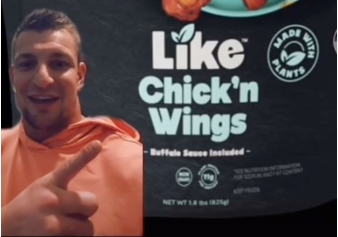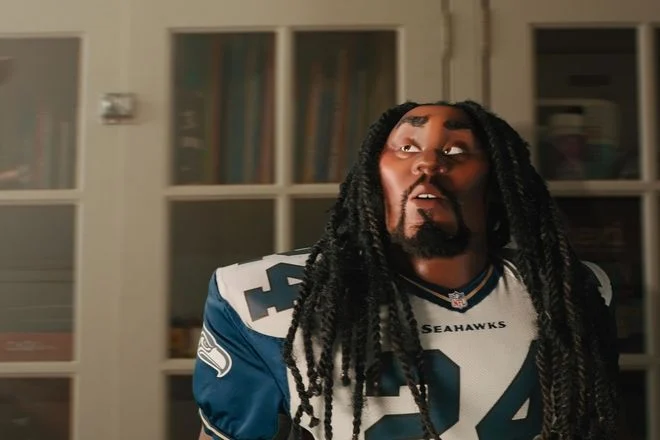For realtime insights, follow us on LinkedIn
A roundup of Stagwell’s work at Super Bowl 2022:
Stagwell’s agencies are transforming marketing – on one of the most captive fields for national marketing, the Super Bowl. Several of our agencies are showing up at the Big Game this year: Anomaly for Meta, Vroom and Expedia; 72andSunny for the NFL; Forsman & Bodenfors for Polestar; and more. Off the TV screen, our agencies are innovating with omnichannel efforts that tap into the fever and fandom of the big game to drive powerful consumer moments for their brand partners.
We believe that there’s a new definition of success for advertisers at the Super Bowl, and it’s driven by digital transformation and changing consumer expectations around brands and experiences. Stagwell is leading the charge in supporting brands as they navigate this new dynamic – explore Stagwell’s presence at The Game, both traditional and less so, below.
But before you dive in:
Captain Morgan x Anomaly
Captain Morgan’s high-tech punch bowl syncs with real-time game data to keep fans in the loop, even when they’re getting a refill.
Meet the Super Bowl snack table addition you never knew you needed: the Captain Morgan Super Bowl Punch Bowl. Anomaly worked with the Captain Morgan team to bring to life the bowl, featuring stadium-inspired lights and sound, Bluetooth speakers, subwoofers and LED graphic equalizers that sync with real-time game data to create an immersive brand experience.
Plus, don’t miss it’s apperance on Jimmy Fallon.
Cenex x Colle McVoy
Colle McVoy created a new campaign for Cenex that celebrates the quirky, charming and often humorous moments of connection that people experience at their local convenience stores. The campaign shows how its 1,500 locations in 19 states power communities while helping to connect people. It’s the next evolution of the brand’s successful Powered Locally platform and includes six :15 spots, two debuting in a few weeks during Super Bowl 56 in 20 Midwest regional markets.
Crosstown Rivals (premiering 2/13/22)
Local Entertainment (premiering 2/13/22)
CUE Health x Doner
Like COVID itself, at home testing company CUE is quick to adapt, putting together a spot in just eight days with Doner. Voiced by Gal Gadot, the ad positions the smart at home testing technology in conversation with a family’s other smart home devices – just another addition to the growing suite of at technologies that keep us safe, run more efficiently, and provide peace of mind. And while COVID is top of mind now, CUE promises that they’re just getting started.
How COVID Testing Brand CUE Put Together a Super Bowl Ad in 8 Days (AdAge)
Expedia x Anomaly
Ewan McGregor gives a convincing plug for the power of experiences over ‘stuff’
As the travel industry looks to continue to gain footing and recover from COVID-drivel losses, Expedia is leading the pack in its commitment to the Big Game with a spot created by Anomaly. With an emphasis on experiences over things, the spot aims to redefine the relationship between the platform and its customers, while challenging the expectations that travelers may have for Expedia and its sister brand, Vrbo.
‘Ewan McGregor and Expedia have Teamed Up to Give Away Free ‘Trips’ on Super Bowl Sunday’ (Forbes)
‘Why the 2022 Super Bowl Makes Sense for Brands’ (AdAge)
‘Can Super Bowl Ads Make Expedia Group the Nike of Travel?’ (AdWeek)
Groupon x Allison+Partners
Gronk is getting out of town… and opening his hope to one lucky winner for the experience of the lifetime.
Allison+Partners led PR for Groupon’s “Party Like a Player” Super Bowl sweepstakes campaign featuring Rob Gronkowski that underscored the brand’s positioning as the go-to experience marketplace. The team secured coverage in USA Today, TMZ Sports, ABC Audio, Travel + Leisure and many more resulting in 3.7B impressions (and counting) in its first week.
LikeMeat x 72andSunny
LikeMeat is celebrating the Big Game with a TikTok scavenger hunt, created by 72andSunny and Blue Hour Studios. To promote its plant-based Chick’n Wings product launch, LikeMeat has invited TikTok users to hunt for digital clues that crack a secret code. Those who unlock the code have a chance to win two free tickets to the Super Bowl as well as other LikeMeat-branded prizes. It’s yet another example of brands going digital-first for the big day, eschewing traditional spots for lower-budget, higher impact activations to connect with their audiences.
Why a plant-based food company started the first TikTok scavenger hunt featuring Gronk just in time for the Super Bowl (Digiday)
Got Milk? x GALE
The milk industry is making a statement at this year’s Super Bowl – that what you’re seeing on the field is not the whole picture. Their spot, airing on the NFL Network and created by GALE, is an inclusive look at the power of women in sport, even (and especially) where they aren’t expected. Featuring women from across the Women’s Football Alliance, the tagline “Football is Football” encourages a broader look at the game and the powerful changemakers behind it.
NFL x 72andSunny
After topping the USA Today Ad Meter last year, 72andSunny + NFL are returning to the screens this year just before halftime with another spot that aims to capture the magic, legacy and power of the game. Featuring cutting edge puppetry and CGI technology from experts at Swaybox, the ad features legendary NFL talent in unexpected places and spaces – bringing the game right into viewers homes. Get ready to bring down the house.
‘
”They Will Be Blown Away’: NFL’s Next Step in ‘Future-Proofing’ Audience Begins with a Super Bowl Ad’ (USA Today)
‘Behind the NFL’s Super Bowl Ad Plans, Which Include Puppetry and CGI’ (AdAge)
Polestar x Forsman & Bodenfors
In it’s first Super Bowl ad, Polestar, the high-end EV company with roots in Sweden, joined a spate of automakers – with a very different approach. The minimalist 30-second spot, executed by F&B, places a focus on what it doesn’t have – gimmicks, punchlines, scandals and distractions. It’s all about the future, driven by electric.
‘Swedish EV Startup Polestar Makes Super Bowl Debut with a “No Cliche” Approach’ (Ad Age)
Quest Oculus for Meta x Anomaly
In it’s first Super Bowl as the newly-rebranded Meta, Oculus Quest is doubling down on the metaverse, with a clear message to the audience – the metaverse is already here, and we’re waiting for you. The full spot, created by Anomaly and premiered on Good Morning America on Feb. 10, shows a metaverse in full swing – including a very-real post-game concert that will be headlined by the Foo Fighters. Its giving people a reason to visit the virtual reality world Meta is building – and pulling viewers into the future they are creating.
‘Inside Meta’s Super Bowl Commercial for the Metaverse’ (AdAge)
‘Meta’s Super Bowl Commerical Depicts Old Brand’s New Life in the Metaverse’ (AdAge)
Tillamook x 72andSunny
72andSunny created a shoppable, digital only music video, Chedderbration to mark National Cheddar Day coinciding with the Super Bowl. The multimedium campaign includes limited edition merch, unique cheddar-based recipes, and coupons accessible only through the Cheddarbration homepage.
Vroom x Anomaly
Vroom’s Super Bowl 2022 commercial sings the praises of a reliable broker – literally
Anomaly makes a return Super Bowl appearance with Vroom, the online car retailer who is literally singing the praises of having a reliable dealer on your side during the car selling process. The 30 second spot again features high-tempo choreography from celebrity choreograper Mandy Moore.
‘Vroom Releases Super Bowl 56 Ad ‘Flake: The Musical” (AdAge)
Related
Articles
In the News, Press Releases
Jul 14, 2025
JULY HARVARD CAPS / HARRIS POLL: OPINIONS ON “BIG BEAUTIFUL BILL” SPLIT WITH 44% OF VOTERS SUPPORTING IT, BUT MOST POLICIES HAVE MAJORITY SUPPORT WITH MANY POPULAR TAX CUTS
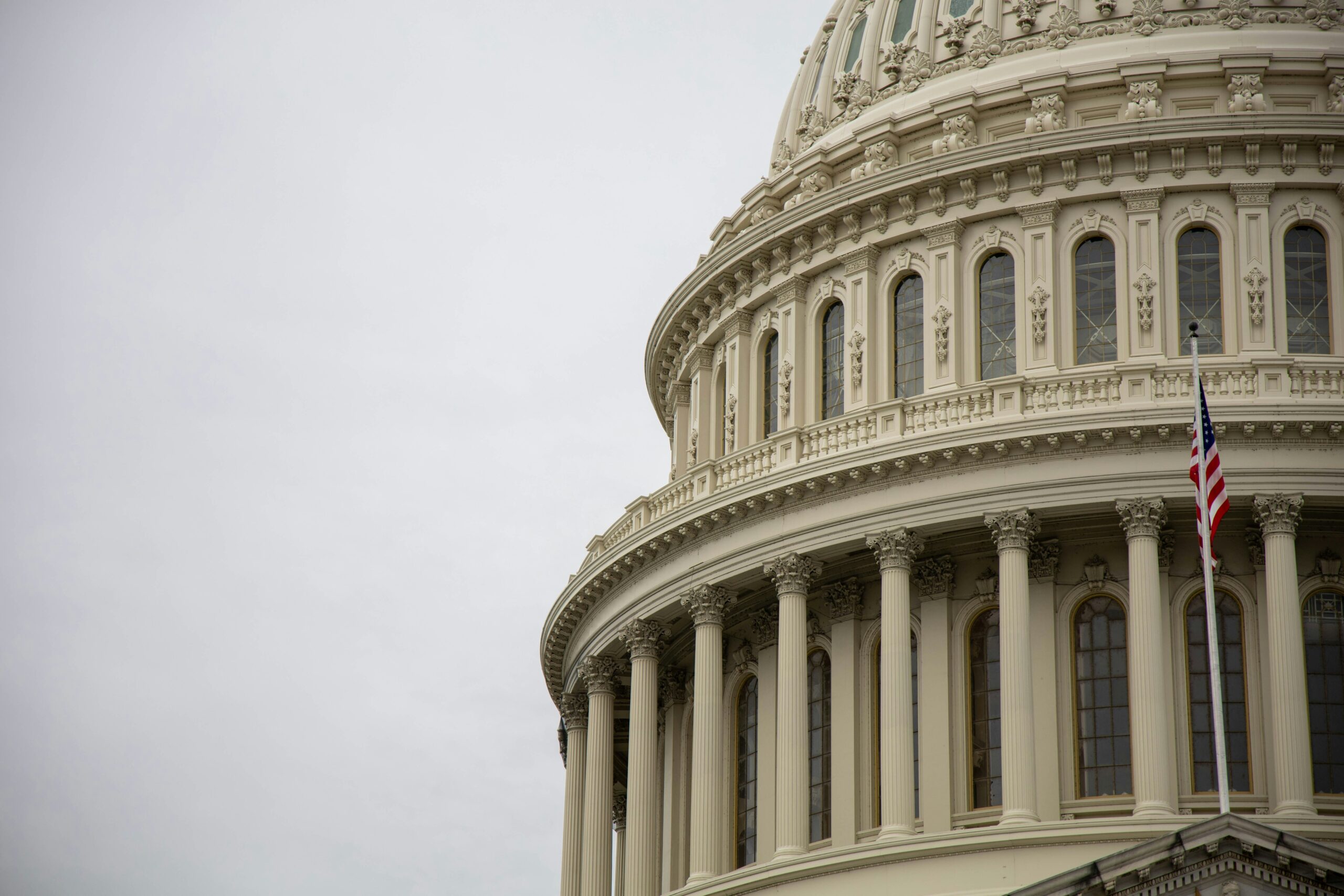
In the News, Press Releases
Jul 09, 2025
STAGWELL LAUNCHES STAGWELL MEDIA PLATFORM (SMP), A CENTRALIZED TEAM OF GLOBAL MEDIA, TECHNOLOGY AND DATA INVESTMENT EXPERTS

In the News, Investments & Financials, Press Releases
Jul 08, 2025
Stagwell (STGW) Schedules Webcast to Discuss Financial Results for the Three Months Ended June 30, 2025

Newsletter
Sign Up
By Will Johnson, CEO, Harris Poll
and Scott Weintraub, VP of Brand Growth, R&CPMK
CONTACT
hello@stagwellglobal.com
SIGN UP FOR OUR INSIGHTS BLASTS
Everyone is trying to figure out what to do about non-fungible tokens (NFTs). These modern tools, born out of the crypto boom, have been viewed as both a passing fad and a future tool for artistic compensation.
Recent research from The Harris Poll and R&CPMK found that about half of consumers familiar with NFTs (47%) are interested in brands offering them as a commercial product, providing new use cases for brand marketers to capitalize on the hyper-relevant digital tokens that occupy so much consumer mindshare. When leveraged correctly, NFTs offer several applications for driving increased revenue and awareness around brand products:
1. NFTs as an incentive for a larger purchase.
Big-ticket items such as festival tickets, cars or trips can make most consumers hit pause and consider purchases. Unlike impulse buys – such as food, beverage or CPG products – these larger ticket items often require repeated exposures to creative campaigns or an extra incentive to push consumers over the line on a purchase.
Our research indicates that NFTs could offer marketers another tool for pushing customers through the funnel, with 30% of Americans stating they would like to receive an NFT as a gift with a purchase.
Indeed, the possibility of attaching an NFT to a purchase teases several value creation possibilities for brand marketers. For live events or travel, an expiring NFT offer could provide a sense of urgency to the purchase as an added incentive to buy now. NFTs could also offer a a seal of authenticity. For example, luxury brands such as Gucci are experimenting with NFTs tied to the purchase of their products. The NFT in this case serves as a luxury indicator, marking the occasion of the purchase and proving the authenticity of the brand to others or third-party buyers.
Whether driving immediacy for an upcoming purchase or as an addendum to prove the authenticity of a luxury item, incentive-based NFTs provide marketers innovative ways to leverage this new technology. By tying a unique token to a physical product or experience, it marks that purchase as special. And the specialized, unique value of NFTs can boost sales, create differentiation and ultimately increase the perceived consumer value of a product.
2. NFTs as commemorative memorabilia to deepen consumer connections
Much like apparel, figurines or trinkets, an NFT represents a myriad of options for marketers looking to create unique, commemorative items for specific events. Instead of tying an NFT to a purchase, marketers can use NFTs as a subsequent item to deepen consumer connection within a marketable moment in time as a token of appreciation.
3. NFTs as additional revenue streams
Related
Articles
In the News, Press Releases
Jul 09, 2025
STAGWELL LAUNCHES STAGWELL MEDIA PLATFORM (SMP), A CENTRALIZED TEAM OF GLOBAL MEDIA, TECHNOLOGY AND DATA INVESTMENT EXPERTS

Artificial Intelligence, In the News, Marketing Frontiers, Press Releases, Stagwell Marketing Cloud, Tech
Jun 12, 2025
PRophet, a Stagwell (STGW) Company, Completes Integration of UNICEPTA, Launches Unified Brand and Enhanced Media Intelligence Offering

In the News, Marketing Frontiers, Press Releases, Stagwell Marketing Cloud, Tech
Jun 11, 2025
The Marketing Cloud Launches Cutting-Edge Platform to Simplify Marketing Workflows
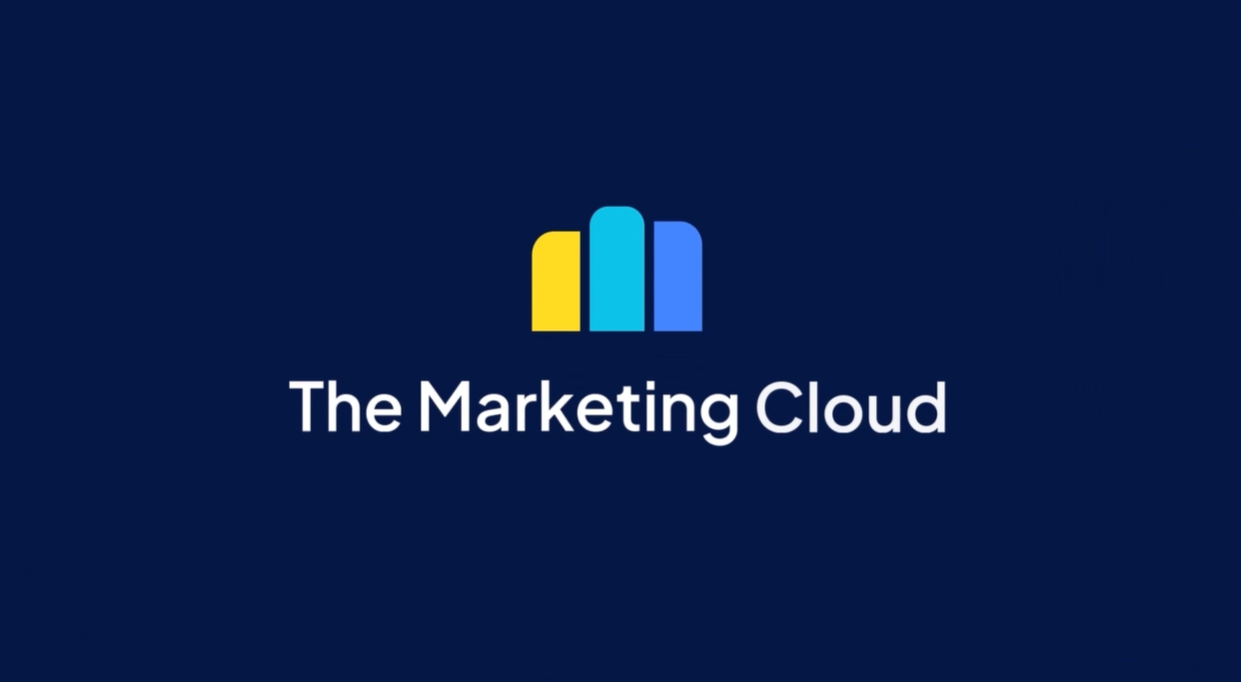
Newsletter
Sign Up
By Matthew Hellon, Senior Research Executive, Northstar Research
Views expressed are the author’s own.
CONTACT
hello@stagwellglobal.com
Marketing Frontiers is a series from Stagwell exploring the methods, mediums, and messes modern marketers will grapple with over the next decade as they chart transformation in the discipline. In February, Stagwell is exploring the rise of NFTs.
NFT craze is a strong case study in three behavioral psychology concepts: Scarcity, Social Proof, and Signaling.
Marketers who leverage these concepts to drive NFT adoption are poised for growth.
Marketing is all about creating value above and beyond a product or services’ inherent value. How can I charge more for my bottle of water that’s basically the same as the one right next to it?
NFTs are perfect for studying marketing. Most NFTs have no inherent physical value. Most do not ‘do’ anything in the physical world (though some do have a physical component such as restaurant reservations or social clubs). Most can be copied with a simple screenshot or screen record. Their value is predicated on someone else wanting the same NFT.
So how do you get someone to buy something with no inherent physical value? Marketing and psychology.
This article is going to cover some of the psychological principles behind the current explosion of NFTs and the lessons they provide for marketers.
Scarcity
Scarcity is one of the most well-known economic and psychological principles. As supply decreases, demand increases. Humans tend to want resources that are difficult to obtain or are in short supply.
NFTs are an interesting case of scarcity because almost all NFT scarcity is artificial. Some of the best-selling NFTs are programmatically created (such as Bored Ape Yacht Club). They’re made using a computer program that varies several factors (facial expression, facial features, clothes etc.) to create different characters. It would be simple to create more characters or more copies of the same characters. They are not constrained by raw materials, production costs or distribution.
However, NFT producers limit their supply. In fact, their limited nature and sense of exclusivity is partly what makes them appealing despite it being entirely manufactured. NFTs have seemingly been able to avoid criticism for artificially constricting supply. This has often not been the case for brands selling physical products. Some speculated whether Nintendo’s supply problems during the launch of the Wii in 2006 were really production issues or a strategic play to drive up sales. High end fashion brands are often criticised for burning their unsold clothes to control their prevalence. Despite this, some brands, such as Supreme, have thrived by limiting stock and driving up demand.
The current culture around NFTs seems to allow brands to artificially constrain supply without much public backlash. However, this could quickly change, especially if consumers realize they’re bidding on something where supply is being artificially constricted.
As the world becomes even more digital, NFTs could become the ultimate signalling, luxury good. What’s better than a luxurious coat? A luxurious line of code.
Social Proof
More fuel to the NFT fire is social proof. Humans are social creatures. We’re heavily influenced by the behaviour of others, especially role models. NFT sellers have done a good job of breaking into celebrity culture. The list of celebrities owning NFTs is extensive (Eminem, Jimmy Fallon, Steph Curry etc.). This adds to their legitimacy (and drives up prices should they ever wish to sell their NFTs). YouTuber and boxer Logan Paul and businessman Gary Vee (9.7m and 22.1 mil Instagram followers respectively) have been extremely vocal about their NFT collections.
Those looking up to these celebrities are more likely to follow their lead and purchase NFTs for themselves. Abercrombie and Fitch used a similar strategy. They marketed to younger people. This in turn led to older people buying their products to stay ‘trendy’. NFTs that manage to get a celebrity sale will also get sales from other people looking to ride the hype train.
Signaling
Linked to social proof is signaling. We like to display our status. It helps us to judge ourselves and our in-group vs others. What better way to show that you’re an affluent, tech savvy, early adopter than to buy a digital image or video with no inherent value?
Many people buy NFTs and then share them on social media to show off their purchase, proof of the power of signaling. Signaling is the primary motivation behind many luxury goods. Further, many social acts such as voting and switching to electric vehicles are being encouraged through signaling such as ‘I voted’ stickers and green number plates respectively. As the world becomes even more digital, NFTs could become the ultimate signaling, luxury good. What’s better than a luxurious coat? A luxurious line of code.
Ultimately, people buy NFTs because they’re scarce, new, celebrities & business leaders are buying them, and they say something about the owner. Or, like cryptocurrencies, they’re bought simply to be sold later for a profit.
The future of NFTs is hard to predict. The housing market bubble leading up to 2008 popped partly because people realized the underlying value of the asset was far lower than was being portrayed. If everyone keeps believing in the value of NFTs, they will continue to prosper. However, even if the NFT bubble bursts, it’s been a quintessential lesson in how value can be created where there is none, with scarcity, social proof and signaling.
Matthew Hellon is a Senior Research Executive at Northstar Research Partners, a full-service global insights agency in the Stagwell network. Hellon was named Young Researcher of the Year in 2021 by the Market Research Society for his contributions at the intersection of marketing and behavioral science. Connect with Matthew on LinkedIn. 
Related
Articles
In the News, Press Releases
Jul 14, 2025
JULY HARVARD CAPS / HARRIS POLL: OPINIONS ON “BIG BEAUTIFUL BILL” SPLIT WITH 44% OF VOTERS SUPPORTING IT, BUT MOST POLICIES HAVE MAJORITY SUPPORT WITH MANY POPULAR TAX CUTS

In the News, Press Releases
Jul 09, 2025
STAGWELL LAUNCHES STAGWELL MEDIA PLATFORM (SMP), A CENTRALIZED TEAM OF GLOBAL MEDIA, TECHNOLOGY AND DATA INVESTMENT EXPERTS

In the News, Investments & Financials, Press Releases
Jul 08, 2025
Stagwell (STGW) Schedules Webcast to Discuss Financial Results for the Three Months Ended June 30, 2025

Newsletter
Sign Up
By Mark Penn, Chairman and CEO, Stagwell
CONTACT
hello@stagwellglobal.com
FEATURING
Marketing Frontiers is a new series from Stagwell exploring the methods, mediums, and messes modern marketers will grapple with over the next decade as they chart transformation in the discipline. This February, Stagwell is exploring NFTs.
NFTS are an opportunity brands shouldn’t pass on.
Two strategies are driving value: incentivizing real-world action with NFTs, and using them to build loyal long-term consumer segments.
In the old days, marketing companies incentivized consumers with free toasters. Today, they give you an NFT, a digital good that may be even more useful. It’s easy to confuse the NFT craze with other emerging new technologies but they stand apart as offering several unique areas of potential value. First, they provide individually usable coupons or discounts that can be tracked; Second, they offer permanent digital copies of paper goods; and third, they offer collectible opportunities that could soar in value,
Brands want to experiment with NFTs but are struggling to determine whether it’s a fad or an effective long-term brand strategy. They must balance wanting to be first movers on exciting new tech that is racking up serious investment while pursuing virtual items as ways to connect digital and in-person experiences. But barriers make this investment difficult, including the expensiveness inherent in producing some types of NFTs, the wild fluctuation in selling prices, and the knowledge gap among consumers who are confused or otherwise skeptical about the technology.
While it’ll be a while before we can gauge the long-term impact of the NFT activations in the market now, it’s clear from early experiments that two styles of NFT activations are proving successful: those that connect digital incentives to real-world action, and those that help build long-term, loyal consumer segments for brands – either within or beyond their usual consumer base. Sports marketers and luxury fashion brands are leading the charge on effective NFT adoption.
NFTs are too important of an opportunity for today’s brands to pass on.
Incentivizing and Rewarding Real-World Action: Sports Brands
This Super Bowl, the NFL and Ticketmaster are partnering to provide in-person spectators free NFTS that commemorate their tickets and serve as digital keepsakes, giving an added boon to die-hard fans for their commitment to filling stadiums and solving for consumers who want a souvenir from the experience but are prone to losing ticket stubs. In addition to the free, wide-cast NFTs, a set of limited-edition tokens will be released to commemorate past Super Bowls hosted in the city of Los Angeles.
Giving consumers something meaningful for attending in-person events that taps into fandoms, hometown loyalty, and the desire to remember exciting experiences is one avenue of common-sense NFT adoption. These are not the flashy, expensive digital art being auctioned the NFT world is known for, but affordable, scaled and tied directly to an activity that fans have already shown engagement with: collecting stubs. These efforts teach a simple lesson about how to forge new paths with emerging technology: don’t reinvent the wheel; look for ways NFTs enhance or supplement existing real-world action.
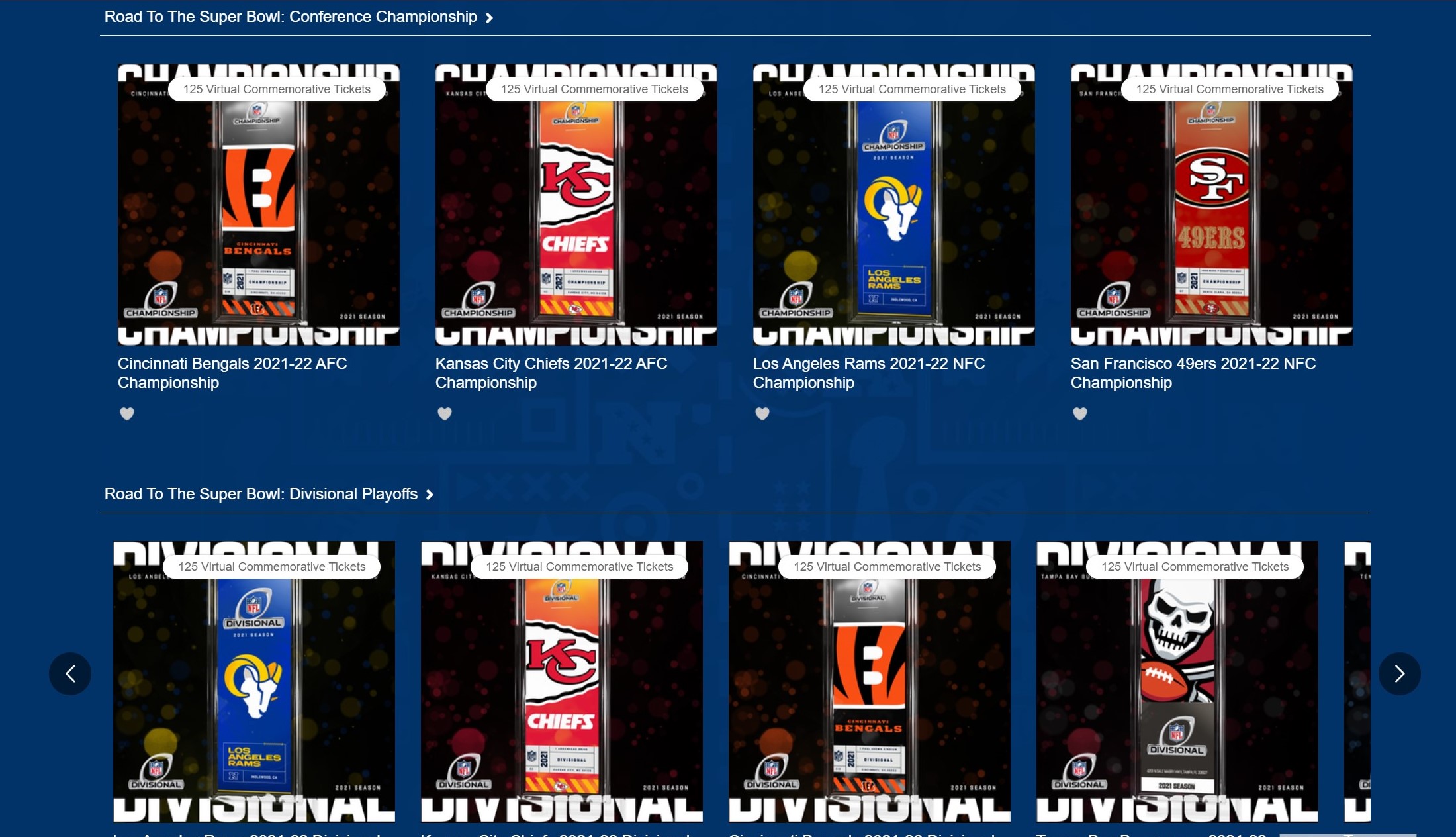
A screenshot of the N.F.L.’s Virtual Marketplace for NFTs and other collectibles.
Building Loyal Long-Term Consumer Segments: Luxury Fashion and Apparel Brands
NFL/Ticketmaster’s effort doubles as a window into how NFTs are tapping into supercharged fan bases to build long-term, loyal consumer segments. Beyond sports, luxury fashion brands use NFTs to engage up-and-coming, nascent consumer segments and prime them for long-term engagement. Louis Vuitton rolled out an adventure game commemorating its founder’s 200th anniversary birthday, featuring a selection of hidden NFTs and a set of ultimate prizes tied to exclusive, real-world offerings. And this year, NYFW goes virtual – presented by Decentraland, the popular Metaverse destination. Decentraland will host a digital component to NYFW that includes runway shows and immersive experiences, branded NFT collections, and other collectibles and digital tokens. These efforts engage a younger set of consumers who may not yet have the disposable income for luxury material purchases in real-life but are attracted to the exclusiveness of the brand and excited for the digital follow-through.
We think NFT’s are too important an opportunity for today’s brands to take a pass on. We believe every brand needs to play in the space in coming years and integrate NFTs into their campaigns. Fans want digital assets of their favorite players; traceable coupons make great targeted assets to enhance customer experience; and everyone loves to collect something that could be valuable.
Sign up to receive more insights from Stagwell and follow us on LinkedIn to stay abreast of news, work, and perspectives from our global network.
Related
Articles
In the News, Press Releases
Jul 14, 2025
JULY HARVARD CAPS / HARRIS POLL: OPINIONS ON “BIG BEAUTIFUL BILL” SPLIT WITH 44% OF VOTERS SUPPORTING IT, BUT MOST POLICIES HAVE MAJORITY SUPPORT WITH MANY POPULAR TAX CUTS

In the News, Press Releases
Jul 09, 2025
STAGWELL LAUNCHES STAGWELL MEDIA PLATFORM (SMP), A CENTRALIZED TEAM OF GLOBAL MEDIA, TECHNOLOGY AND DATA INVESTMENT EXPERTS

In the News, Investments & Financials, Press Releases
Jul 08, 2025
Stagwell (STGW) Schedules Webcast to Discuss Financial Results for the Three Months Ended June 30, 2025

Newsletter
Sign Up
These days, good Super Bowl marketing is about more than the ad you run during the big game. Digital marketing’s rise emphasizes creative, omnichannel efforts that leverage emotional resonance and new storytelling mediums to drive business impact. Four key evolutions are changing the ways brands tackle this football tentpole:
- New Definitions of “Super Bowl Campaigns” leave brand marketers to ask: how do I run a Super Bowl campaign that’s more than just the ad?
- New Experiments in Cutting Edge Tech driving powerful new creative dimensions to the consumer experience at and around The Big Game
- New Challengers joining the ranks of advertisers as digital levels the playing field of who can afford to make magic out of a Super Bowl moment
- New Platforms Driving Importance of Social in the ever-evolving Big Game media and content mix.

1. New Definitions of Super Bowl Campaigns
Last year, for the first time since 1983, Anheuser-Busch decided to sit its iconic beer brand Budweiser out of the Super Bowl ad inventory, instead donating the money it would have spent on the ad to support coronavirus vaccination awareness efforts. Stagwell global communications agency Allison+Partners supported the media effort, a strong case study in how you can lead the Super Bowl discourse without appearing in the game. Headlines called the brand a “winner” for the purposeful pivot, and the effort went on to win several effectiveness awards.
While not every brand will find a pivot that works as well, digital marketing is pushing many to consider alternative ways to get Super Bowl ad value without the ad investment. Stunts tied to the game are one approach, but simpler digital activations and content that link brand identity to the underlying currents of sports fandom and entertainment can be winning strategies. See 72andSunny and Tillamook County Creamery’s experiment this year with a shoppable music video released to commemorate National Cheddar Day and the Super Bowl sharing a date on February 13.
2. New Challengers
The Big Game is a whopper investment. The sticker price for spots this year broke records, hitting as high as $7M for some ad inventory. While securing a prime-time spot can wreak ruin on marketing budgets, newer faces have taken to the field in recent years, as digital marketing tools level the playing field for the type and scale of brands that can derive halo value from the Big Game. D.T.C. and e-commerce are flooding the annual roster, with cheeky online retailers like Vroom and other digital natives like DoorDash using it as a platform to scale beyond niche beginnings. Expect the roster to continue diversifying each year, bringing newer, challenger brands to the fore while pushing legacy staples to re-evaluate whether a multi-million dollar spot is the best avenue to drive sustained marketing impact.
3. New Experiments in Cutting Edge Tech
While S.B. viewers will undoubtedly be distracted by digital platforms during the game, the audience remains comparatively rapt in attention during ad breaks, giving brands a solid audience for testing splashy, transformative technology. In recent years, the N.F.L. has run the play on this in partnership with Stagwell creative agency 72andSunny, first by pulling off the game’s first-ever live ad integration transitioning from pre-recorded spot footage to an on-the-field activation. The following year they upped the ante and, well, raised the dead, using holographics, 3D projections, and more to resurrect legendary football coach Vince Lombardi for a resonant message about resilience. This year, Meta is using the Super Bowl as an opportunity to engage consumers on the metaverse technology already available to them via mixed-reality.
As a tactic for driving social conversation the day and week after the Big Game, activations that wield emerging technology to do new, exciting, and yet-untested feats of creativity can be powerful for brands at the Big Game. Aligning experimentation with your product suite, the frontiers of new technology your brand is eager to own, and consumers’ stated interest in the tech will be essential for brands moving forward.
4. New Platforms Driving the Importance of Social
Today’s marketers know this well: it’s no longer about making the right 2-3 assets for a campaign, you need thousands of assets that can cut across social platforms, search, banner, paid, earned, out of Home, and more to amplify your brand’s big game message. At the same time, S.B. advertising is no longer about the crowning jewel of the main campaign film: a dizzying array of shorter cuts, social-specific content, and other branded assets must be prepared to swarm digital channels and amplify the brand’s key messaging.
Social only continues to rise as an essential part of this mix. Close to half of Super Bowl viewers plan to interact on social media during the game, per The Harris Poll/Haven, suggesting advertisers could benefit significantly from the extended post-game conversation on content that makes waves during the game. Marketers should think holistically about the type and mix of content and media needed to drive results.
The Bottom Line
The playbook for what drives value for brands at The Big Game is evolving with new digital tools and alternatives to significant ad investment. This will continue to attract more brands to consider how they can capitalize on the marketing potential of the Big Game while emerging technology will start to reshape the nature of the advertising activations we see each year. Marketers: as you enjoy the excitement of Super Bowl LVI, search for and identify ways brands are making the most out of new formats for social and digital content. Challenge your teams to think beyond the Super Bowl ad to the marketing magic possible when the moment is met with a modern approach to brand marketing.
Follow Stagwell on LinkedIn to keep up with the latest insights from our team.
Related
Articles
In the News, Press Releases
Jul 09, 2025
STAGWELL LAUNCHES STAGWELL MEDIA PLATFORM (SMP), A CENTRALIZED TEAM OF GLOBAL MEDIA, TECHNOLOGY AND DATA INVESTMENT EXPERTS

Artificial Intelligence, In the News, Marketing Frontiers, Press Releases, Stagwell Marketing Cloud, Tech
Jun 12, 2025
PRophet, a Stagwell (STGW) Company, Completes Integration of UNICEPTA, Launches Unified Brand and Enhanced Media Intelligence Offering

In the News, Marketing Frontiers, Press Releases, Stagwell Marketing Cloud, Tech
Jun 11, 2025
The Marketing Cloud Launches Cutting-Edge Platform to Simplify Marketing Workflows

Newsletter
Sign Up
CONTACT
hello@stagwellglobal.com
SIGN UP FOR OUR INSIGHTS BLASTS
By Josh Beatty, Founder, ARound
Early reactions to Miller Lite’s “Meta Lite Bar” experience – where it will offer virtual beer, games, and a chance to view what would have been its Big Game spot –prove there’s work needed to convince the masses that the Metaverse matters. Steve Colbert ripped into the idea: “Man, I love commercials, but I wish I had to work harder to access them while my avatar drinks this imaginary can of carbonated disappointment.”
While some of his riff is just late-night chum, there are insights about how brands should approach the Metaverse, mixed-reality, and emerging tech that consumers are just beginning to identify and understand. Colbert’s points are top of mind for everyone as big ideas for virtual storefronts, fully immersive VR experiences, and digital avatar ecosystems fill the news.
Two parts of Colbert’s criticism for brands to unravel:
- “Work harder to access” – This is going to be a big barrier to early adoption of Metaverse tech. If consumers don’t find it easy to access brand experiences, they won’t engage. While conditioned consumer behavior is the hardest thing in the world to change (when did you last download an app for something?), the only thing stronger than conditioned behavior is a change to one’s environment. Experiments in AR and mixed-reality, especially powered by mobile, can disrupt and captivate consumers in a memorable and meaningful way. Shared environments with low barriers to access will drive value in this space.
- “While my avatar drinks this imaginary can of carbonated disappointment.” The Metaverse is a shared experience, but virtual reality can be isolating. AR and other tech that allows for shared social experiences will connect us to people and places in exciting and fun ways. While the idea of drinking a digital beer may leave people scratching their heads, if the metaverse dive bar that Miller Lite unveils during the Big Game includes a compelling array of shared content and experiences, the fun consumers are having together in this space will eclipse their initial confusion at the premise.
Many brands will try their hands at Metaversal tech in the coming months. Marketers should learn from early consumer/social reactions to experiments underway at the Big Game and proactively work to solve some of the barriers of consumer adoption in this exciting new space.
Related
Articles
In the News, Press Releases
Jul 09, 2025
STAGWELL LAUNCHES STAGWELL MEDIA PLATFORM (SMP), A CENTRALIZED TEAM OF GLOBAL MEDIA, TECHNOLOGY AND DATA INVESTMENT EXPERTS

Artificial Intelligence, In the News, Marketing Frontiers, Press Releases, Stagwell Marketing Cloud, Tech
Jun 12, 2025
PRophet, a Stagwell (STGW) Company, Completes Integration of UNICEPTA, Launches Unified Brand and Enhanced Media Intelligence Offering

In the News, Marketing Frontiers, Press Releases, Stagwell Marketing Cloud, Tech
Jun 11, 2025
The Marketing Cloud Launches Cutting-Edge Platform to Simplify Marketing Workflows

Newsletter
Sign Up
Proven digital executives from Hudson MX, Uber, and Stagwell to architect business transformation solutions for in-house marketers
New York, New York – February 2, 2022 – Stagwell (NASDAQ:STGW), the challenger network built to transform marketing, today welcomed three senior executives to lead, develop, and grow products within the Stagwell Marketing Cloud (SMC): Abe Geiger, Chief Product Officer; Elspeth Paige Rollert, Chief Marketing Officer; and Matt Lochner, Managing Director.
The team of proven digital product and marketing leaders will drive SaaS and DaaS innovation for the Stagwell Marketing Cloud, a suite of technology products that supports in-house marketing transformation for modern businesses. The team will incubate new products and growing the existing suite of solutions, which currently spans influencer marketing, audience segmentation, public relations, immersive experiences and brand insights by levering AI, ML and AR.
“With the arrival of Abe, Elspeth, and Matt, the Stagwell Marketing Cloud is in “liftoff” mode. We’re accelerating Stagwell’s focus on product innovation to meet the CMOs’ need for in-house marketing stack solutions,” said Mark Penn, Chairman and CEO, Stagwell. “Whether clients desire a best-in-class integrated marketing team at one of our agencies or a product solution for in-house teams, Stagwell is able to offer the full range of creation and execution services modern marketers need.”
“Today’s brands are facing some of the most exciting technology and product challenges of our time, from the need to scale deep A.I. solutions across global enterprises to new frontiers in mixed-reality, digital content, and the metaverse,” said Geiger. “I’m thrilled to join a network committed to the challenger mindset and pushing innovation across the new disciplines of digital marketing.”
Geiger arrives at Stagwell from Hudson MX, an advertising technology business that provides cloud-based media buying and media accounting solutions. Prior to HudsonMX, Geiger served as VP of Product Development at Legal Shield, and was the Founder and CEO of Shake, a mobile-first legal product for consumers and SMBs.
Rollert previously served as Global Head of Partnership Marketing for Uber, where she provided strategic leadership and global coordination across Uber’s portfolio of brands, including Uber Eats. Prior to that, she held product and analyst roles at Microsoft and Penn Schoen Berland.
Lochner is returning to Stagwell from Harvard University, where he is completing his Juris Doctor. Previously, he served as Vice President, M&A at the Stagwell Group and worked on over twenty of Stagwell’s acquisitions.
The trio joins a slate of recent senior hires at Stagwell across core central departments, including Chief People Officer Stephanie Howley, Chief Technology Officer Merrill Raman, and internal executive promotions across Stagwell’s Brand, Growth, Global Client Services, and Global Recruitment teams.
Stagwell debuted the latest product in the SMC at CES 2022: ARound, a tool helping venues and brands scale AR experiences for live events and retail. To learn more about the SMC, visit stagwellglobal.com.
About Stagwell
Stagwell is the challenger network built to transform marketing. We deliver scaled creative performance for the world’s most ambitious brands, connecting culture-moving creativity with leading-edge technology to harmonize the art and science of marketing. Led by entrepreneurs, our 10,000+ specialists in 20+ countries are unified under a single purpose: to drive effectiveness and improve business results for their clients. Join us at www.stagwellglobal.com.
Related
Articles
In the News, Press Releases
Jul 14, 2025
JULY HARVARD CAPS / HARRIS POLL: OPINIONS ON “BIG BEAUTIFUL BILL” SPLIT WITH 44% OF VOTERS SUPPORTING IT, BUT MOST POLICIES HAVE MAJORITY SUPPORT WITH MANY POPULAR TAX CUTS

In the News, Press Releases
Jul 09, 2025
STAGWELL LAUNCHES STAGWELL MEDIA PLATFORM (SMP), A CENTRALIZED TEAM OF GLOBAL MEDIA, TECHNOLOGY AND DATA INVESTMENT EXPERTS

In the News, Investments & Financials, Press Releases
Jul 08, 2025
Stagwell (STGW) Schedules Webcast to Discuss Financial Results for the Three Months Ended June 30, 2025

Newsletter
Sign Up
By
Rico Cipriaso, SVP, Digital Strategy and Transformation
and Eric Ong, VP, Technical Director, Concentric Health Experience
AR and mixed-reality are powerful tools for enhancing visualizations for patients and providers in healthcare marketing.
More immersive digital experiences can drive empathy, helping accurately model experiences and expected outcomes.
Scaling AR experiences to platforms consumers actively engage with is the top executional barrier for today’s brands.
Healthcare brands are ripe for the AR and mixed-reality revolution.
Everyone frets about their health. For someone newly diagnosed with a mispronounceable disease, picking up a prescription from the pharmacy for the first time is the culmination of multiple steps of worry, research, and grappling with challenging content. The pill or injection they receive is a reminder of hope and the possibility of a positive outcome. What if we could reinforce that hope with an experience that truly brings to life the sources of life-changing solutions?
Imagine: a routine scan from your mobile device at the start of your treatment unlocks a window into information about the disease, expected outcomes, and the support you need to get through it. With augmented and mixed-reality, healthcare brands have an opportunity to create dynamic visualizations for patients and providers that arm them with the education to drive better experiences and empathy to drive positive outcomes. AR/VR will help enhance both B2B and B2C efforts.
Imagine: a routine scan from your mobile device at the start of your treatment unlocks a window into information about the disease, expected outcomes, and the support you need to get through it.
Aiding Modern Education
Precision and depth of understanding are essential for healthcare practitioners. With AR and mixed-reality, these professionals’ learning tools can be enhanced with more multi-spatial visualizations of the body, cell and chemical interactions, and more, giving providers the confidence to act decisively in treatment.
We’ve seen that spirit extend beyond university and medical school settings; throughout the COVID-19 pandemic, public health professionals and medical influencers collaborated on mobile AR data visualization to help people better make sense of the large amounts of evolving COVID-19 data. Applying simple AR layers to social content can help bring life to flat charts with 3D animation, ultimately driving a more digestible and interactive educational experience.
Driving Empathy Through Enhanced Experiences
We know emotional appeal is the magic sauce of good marketing. Enabling more immersive healthcare brand experiences in B2B and B2C with mixed-reality can give brands the tools to emulate patients’ experiences, model the impact of new drugs, products, and services, and help translate patients’ lived experiences. In our award-winning work for Sunovion, we leveraged VR to bring Lonhala Magnair’s in-person, interactive “Room to Breathe” to more healthcare providers. We rendered the home of a user of the drug in VR to showcase how each room of the house reflects the product’s unique features, including nigh silent administration, quick nebulization time, and convenient audiovisual feedback. The campaign grabbed the attention of prospective targets in an eye-catching way and helped place them in the patient’s shoes.
These mixed-reality approaches can also arm those suffering from chronic health ailments with tools for better communicating their needs and experiences. Excedrin’s 2016 Migraine Experience VR campaign used mixed-reality to model the audio, visual, and spatial effects a migraine can have on a patient, adding an experiential layer that helped drive added empathy. Their effort went beyond the VR headset experience to include a mobile app version that let anyone share the experience with loved ones. With the world returning to the office from remote work, healthcare brands will have many opportunities to generate compelling mixed-reality content about navigating and advocating for support in this evolving health environment.
Finally, B2B healthcare marketers exhibiting at trade shows can integrate mixed-reality into their product demonstrations and showcases to enhance the persuasive element of their presentations.
What to do?
- Think beyond a standard deliverables list, to envision impact first.
- Seek partners that understand the current martech landscape wand are committed to experimenting with new storytelling methods.
- Always develop a plan and allocate funds for extensive testing.
Exciting possibilities await healthcare brands with mixed-reality, but executional barriers remain, from closed Martech platforms that don’t yet allow AR or VR executions to the difficulty of getting mixed-reality experiences into the hands of target audiences. Rolling out an AR or VR experience now often means introducing a new platform to consumers – and we know consumers find difficulty in leaving an already-familiar walled garden. As a result of this, while the idea behind an experience may be great, brand efforts end up shifting from building more engaging experiences to solving the issue of sourcing new products and tech solutions to make mixed-reality. Realistically, brands will need to create these experiences on apps and platforms their consumer bases already engage with, or the bar is high for scaling adoption.
The good news: more investment in mobile mixed-reality makes this a ripe time to experiment with these new digital marketing tools to ensure your brand is prepared to leverage emerging mediums of storytelling and consumer connections.
Now is the time to stretch your creative possibility and think beyond a standard deliverables list to envision impact first. Being able to experience healthcare solutions is more potent than simply knowing about them – how can you use mixed-reality to drive more effective marketing?
Second, seek partners that understand the current martech landscape and are committed to exploring how newer storytelling mediums unlocked by emerging technology integrate into omnichannel marketing efforts. Be critical about whom you work with: they should be conversant in the potential of mixed-reality while nursing a healthy skepticism for the tactics needed to scale consumer adoption.
This leads to our final advice: always ask your mixed-reality partners to develop to plan and allocate funds for extensive testing. Because of the high engagement barrier inherent in these solutions, you want to ensure your brand comes to your customers with a fine-tuned, new and expansive way of telling your story, absent any kinks in the user experience.
Related
Articles
In the News, Press Releases
Jul 14, 2025
JULY HARVARD CAPS / HARRIS POLL: OPINIONS ON “BIG BEAUTIFUL BILL” SPLIT WITH 44% OF VOTERS SUPPORTING IT, BUT MOST POLICIES HAVE MAJORITY SUPPORT WITH MANY POPULAR TAX CUTS

In the News, Press Releases
Jul 09, 2025
STAGWELL LAUNCHES STAGWELL MEDIA PLATFORM (SMP), A CENTRALIZED TEAM OF GLOBAL MEDIA, TECHNOLOGY AND DATA INVESTMENT EXPERTS

In the News, Investments & Financials, Press Releases
Jul 08, 2025
Stagwell (STGW) Schedules Webcast to Discuss Financial Results for the Three Months Ended June 30, 2025

Newsletter
Sign Up
By Stagwell Insights
CONTACT
hello@stagwellglobal.com
Marketing Frontiers is a new series from Stagwell exploring the methods, mediums, and messes modern marketers will grapple with over the next decade as they chart transformation in the discipline. This January, Stagwell is exploring the new frontiers of Augmented Reality.
Retail happens at the convenience of the consumer.
AR can change when and where brands build experiences, the discovery-to-purchase funnel, and how brands navigate the blended shopping experience.
Three trends will lead retail AR: Try Before You Buy, New Discovery Dimensions, and the Gamification of Retail.
The next decade of retail will no longer unfold on a brand’s terms. Digital transformation and the blending of in-person and physical experiences means commerce happens at the consumer’s convenience: on mobile devices, in between meetings, on the subway, and everywhere in between. This pivot will fundamentally change when and where brands build experiences, the discovery-to-purchase funnel, and the need for solutions that adopt the functional convenience of brick-and-mortar retail across any digital platform.
This change is more of an opportunity than a challenge. Mobile AR in retail has unlocked three trends worth capitalizing on for brands seeking creative strategies for adopting AR across their retail experience.
Try Before You Buy
Apparel and home goods have fine-tuned the use of mobile AR to “try before you buy,” allowing consumers to scale clothing sizes to their figure using their cellphone’s cameras or gauge whether a futon will fit in their apartments. Brands that haven’t sought ways to activate mobile AR yet should jump on the trend. Those who have should look for opportunities to push beyond rendering individual products in mixed-reality to build entirely virtual closets and storefronts, in line with the experiments brands like Kohl’s, FaceCake, and Snap have pioneered.
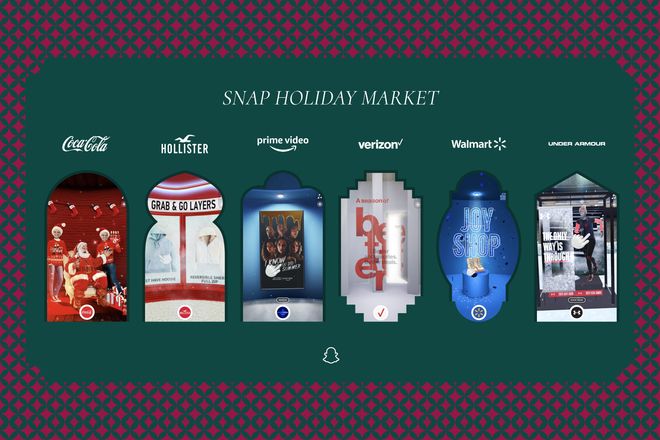
Give consumers the ability to purchase, try on, see reviews, engage with a customer specialist, and more without leaving the comfort of their homes, and you crack the convenience code. Imagine the world of possibilities for more addressable marketing, influencer integrations, and social commerce.
AR isn’t just landscape for apparel and home goods. Food and CPG brands might foray into more AR content experiences that illuminate how their products can be blended to create exciting recipes. Picture Kraft or Nestle emblazoning their packages with QR codes that activate AR chef’s assistants on mobile to teach you the perfect way to blend pantry staples to make a complicated feast.
New Dimension for Discovery
The importance of convenience for consumers in the digital era doubles as an attention and discovery problem. Besieged by brand messaging, consumers have difficulty finding relevant and valuable marketing and promotions when they desire them. Those with smaller marketing budgets struggle to make noise in the din, barred from prime advertising real-estate. AR unlocks a new layer or dimension of marketing that can power intelligent, sustainable content opportunities to aid today’s brands in discovery. Location-specific AR overlays can add flair to major promotions, bring virtual participants closer to the brick-and-mortar experience, and transform common areas like subway trains or city parks into rich canvasses for marketing integrations.
Savvy businesses might partner with regional publishers for guerilla OOH activations, placing QR codes at major city throughways that open up an AR directory of local retailers, shopping centers, and other nearby experiences. This would allow consumers to access an engaging universe of directional content while cutting expenses for regional media distribution and carving out more stages for branded placement and authentic advertising.
Gamification of Retail
The trend towards experiential retail underscores a key point about today’s consumers: digital experiences are never wholly individual. It’s why AR shows such promise for live events and retail. If you can add a layer of shared competition to your retail experiences, you can power deeper consumer engagement. Sporting apps that pit peers against each other to meet fitness goals could enhance that experience with an AR layer that allows for connection with nearby runners, displays local challenges like conquering a particularly steep hill, and rewards users with a coupon or digital assets.
In-store brands might roll out limited-time activations like scavenger hunts to encourage shoppers to engage with as many AR-powered product displays as possible to unlock additional savings at the counter. A retailer might also add an AR layer encouraging added engagement with overstocked items, bring product displays to life with virtual influencers rendered in AR, or use augmented reality content to add local color about in-store products. With experiments in NFTs and other virtual tokens and commodities, brands have an array of new tools at their disposal to encourage and reward hybrid engagement.
What to do?
Our verdict: now is the time to experiment with and fine-tune brand-relevant strategies for working AR layers through the marketing stack. Mixed reality can be a serious investment. Brands should look for existing partners who can help deliver AR technology via platforms consumers are already engaging with to minimize the start-up costs of a new foray into AR.
The question of budgets and investment aside, our advice about AR mirrors our advice about many new marketing frontiers: before running blindly in their pursuit, ensure the technology is additive to the digital layer of your brand. Ask yourself how AR will add dimensionality or a compelling new flavor of experience to the products and services you provide your consumers. We are bullish that AR’s value is creating shared experiences and enhancing convenience for today’s consumers. If your AR strategy doesn’t accomplish those two goals, you may be better off experimenting with other modern digital marketing tools.
Finally, AR and the industry-wide focus on the metaverse is an opportunity to push innovation and creativity further than ever before. Don’t just replicate content and experiences in AR; redefine them. View augmented reality as an opportunity to unlock new ways to connect and communicate with your brand’s consumer base and zealously chase a more creative future.
Related
Articles
In the News, Press Releases
Jul 14, 2025
JULY HARVARD CAPS / HARRIS POLL: OPINIONS ON “BIG BEAUTIFUL BILL” SPLIT WITH 44% OF VOTERS SUPPORTING IT, BUT MOST POLICIES HAVE MAJORITY SUPPORT WITH MANY POPULAR TAX CUTS

In the News, Press Releases
Jul 09, 2025
STAGWELL LAUNCHES STAGWELL MEDIA PLATFORM (SMP), A CENTRALIZED TEAM OF GLOBAL MEDIA, TECHNOLOGY AND DATA INVESTMENT EXPERTS

In the News, Investments & Financials, Press Releases
Jul 08, 2025
Stagwell (STGW) Schedules Webcast to Discuss Financial Results for the Three Months Ended June 30, 2025

Newsletter
Sign Up
What are the forces at work reshaping the way brands and marketers connect with today’s consumers? The next decade of marketing innovation will be driven by the emerging technology piquing consumer, brand, and investor interest today: new mediums of storytelling unlocked by mixed-reality, new methods of communicating powered by social commerce, and problems to pre-empt driven by convergent social forces and the enduring digital acceleration.
Stagwell is all about transforming marketing – and we’re spending the year working with our agencies to explore how the most innovating and compelling opportunities in new frontiers will transform the way brands and marketers do business.
We’ll…
explore the practical, helping you understand things like if and how your brand should integrate virtual influencers in digital marketing efforts.
probe the conceptual…with questions like what responsibility brands have as they begin to imagine marketing and brand identity in space?
offer strategies for making sense of the monumental…with perspectives on how and when brands should get involved in the bourgeoning metaverse.
Meet Marketing Frontiers – Stagwell’s new content series that will unpack these blue-sky ideas before today’s brands, simplifying the future and helping leaders understand how these concepts will change the way we do business today and tomorrow.
Originally released on
CONTACT
Lorem Ipsum
FEATURING
Related
Articles
Artificial Intelligence, In the News, Marketing Frontiers, Press Releases, Stagwell Marketing Cloud, Tech
Jun 12, 2025
PRophet, a Stagwell (STGW) Company, Completes Integration of UNICEPTA, Launches Unified Brand and Enhanced Media Intelligence Offering

In the News, Marketing Frontiers, Press Releases, Stagwell Marketing Cloud, Tech
Jun 11, 2025
The Marketing Cloud Launches Cutting-Edge Platform to Simplify Marketing Workflows

Artificial Intelligence, In the News, Press Releases, Stagwell Marketing Cloud
May 22, 2025
PRophet, a Stagwell (STGW) Company, Releases AI Agentic Search for InfluencerMarketing.AI, Revolutionizing Influencer and Creator Discovery


